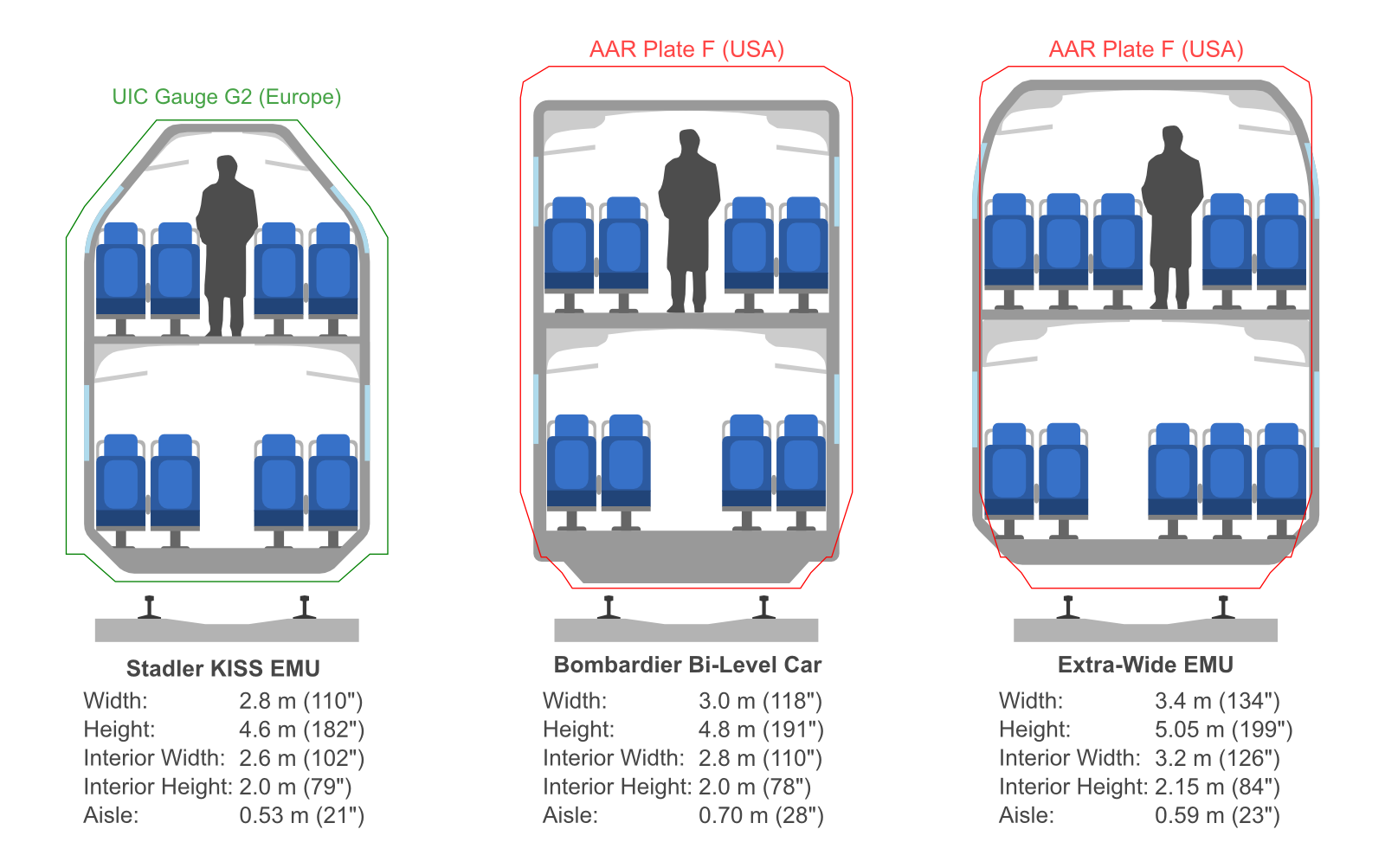The Swiss rail vehicle manufacturer Stadler was
recently awarded a contract for 112 bilevel EMU cars to be delivered by 2016 for the Moscow airport express, based on their modular
KISS vehicle concept. A rendering is shown at right, complete with retro-Soviet hood ornament. (
UPDATE 6/2013:
datasheet now available). These EMUs are noteworthy because they take full advantage of the generous Russian loading gauge (the available height and width clearances), resulting in two spacious levels of passenger seating, and also because they
use high platforms. This is a European EMU on steroids, and Caltrain should take notice.
In a blended HSR + Caltrain system, slowly transitioning to full grade separation
over a time scale of decades, several constraints exist that will impede Caltrain's ability to add capacity to meet increasing ridership demand:
- More trains per hour won't work. Because there are only two shared tracks, the capacity of the corridor (as measured in trains per hour) is limited. It's going to be a stretch for Caltrain to operate six trains per hour per direction with HSR in the mix, so adding more is clearly out of the question until the much-dreaded additional tracks are built.
- Longer trains won't work. Train length is limited at stations such as Burlingame and Menlo Park, where grade crossings are found at both ends of the station platforms. Until these locations are grade-separated and new longer platforms are built, adding more cars to make longer trains is not feasible. In any case, most Caltrain platforms limit train lengths to 600 feet (or 7 standard-length cars), at least until they are rebuilt.
- Taller trains won't work. Today's bi-level trains already take good advantage of the available height, so there is no seating capacity to be gained by growing trains any taller.







